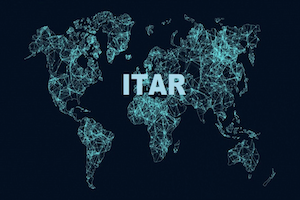Hot (or at least warm) Off the Press: Updates & Revisions to the ITAR
By Bruce Leeds, Senior Counsel, Braumiller Law Group
The Directorate of Defense Trade Controls (DDTC) is continuing its project to revise and update the International Traffic in Arms Regulations (ITAR). Some of the changes are editorial and some are substantive. If you are affected by the ITAR or think you might be, you will need to stay on top of the changes because some (or all) may affect you. Here is a summary of some of the recent changes. Most have taken effect, but one is in the comment stage.
Maximum Penalties for ITAR Violations
DDTC has raised the maximum penalty for ITAR violations not to exceed the greater of $1,200,000 or the amount that is twice the value of the transaction that is the basis of the violation with respect to which the penalty is imposed. These amounts will apply to penalties assessed after Dec. 27, 2022.
Compliance people may want to advertise this to the powers-that-be in their companies.
Guidance for activities of U.S. persons abroad (USPAB)
This refers to U.S. persons who are employed outside the US by foreign companies. The U.S. person will require DDTC approval to provide ITAR-controlled defense services to their employers and other foreign persons. Check Part 120, Subpart C for the definition of “defense services.”
DDTC has updated the guidance for US persons abroad applications. A new guidance document, as well as a submission letter template and sample §126.13 certification letter for USPAB authorization requests, are located on the “Guidelines & Instructions” page of the DDTC website. The US person will be the applicant and use form DS-6004 to request approval to provide defense services. The approval will be sent to the applicant by email.
The DDTC approval will also state: “This approval authorizes you to furnish defense services to your foreign employer and the foreign parties specifically identified in your application as needing to receive defense services from you. Should you need to furnish defense services to any other foreign parties, you must submit another request that specifically identifies these parties as recipients of defense services.”
The Form DS-6004 and approval will not authorize transfer of ITAR-controlled technical data to the USPAB’s employer. That will require a separate application and approval.
Activities Not Considered Exports, Re-exports, Retransfers, or Temporary Imports
Two proposed additions to the ITAR: First, subject to certain conditions, the taking of defense articles outside a previously approved country by the armed forces of a foreign government or United Nations personnel on a deployment or training exercise is not an export, reexport, retransfer, or temporary import. Second, a foreign defense article that enters the United States, either permanently or temporarily, and that is subsequently exported from the United States pursuant to a license or other approval under this subchapter, is not subject to the reexport and retransfer requirements the ITAR, provided it has not been modified, enhanced, upgraded, or otherwise altered or improved or had a U.S.-origin defense article integrated into it.
Published in FR on Dec. 16, 2022 and subject to a 60-day comment period.
Compliance Program Guidelines
DDTC published new compliance program guidelines on Dec. 5, 2022. These guidelines serve as a guide to establishing a compliance program. They could also serve as mitigating factor in a voluntary self-disclosure for ITAR violations. The guidelines are very similar to the COSO internal control guidelines which are always useful for setting up any sort of compliance program.
The basic elements of the ITAR compliance program guidelines are listed below. The guidance document at the DDTC site provides much more detailed examples and information on the guidelines.
Management commitment. Having an ITAR compliance function that is recognized and supported by top management and staffed with Empowered Officials and trained employees. Management commitment also includes generating and updating appropriate policies and procedures for ITAR compliance.
DDTC registration, jurisdiction and classification authorizations and other ITAR activities. Maintenance of registration with DDTC; seeking commodity jurisdiction determinations when needed, and seeking Advisory Opinions from DDTC. ITAR activities include applying for and maintaining licenses and agreements, and classifying products on the USML
Recordkeeping. This includes maintaining records of all license-related activities and exports of articles and technical data for at least 5 years from the date of the transaction.
Detecting, reporting and disclosing violations. Having a method for detecting and investigating potential ITAR violations and submitting voluntary self-disclosures to DDTC as needed.
ITAR training. This includes providing internal or external training for the Empowered Officials and export compliance staff. It also includes providing training to company personnel and outside service providers on ITAR compliance.
Risk Assessment. Recognizing the potential ITAR-related risks for exporting, transferring technical data and performing defense services for foreign persons and foreign entities.
Audits and compliance monitoring. Performing periodic audits of the company ITAR program. These can be conducted by internal audit or Legal or by outside auditors or law firms.
ITAR compliance manual. Writing and updating an ITAR compliance manual and making it available to all involved employees and functions.
Fleshing out the guidelines in the DDTC document would result in an excellent compliance manual with supporting policies and procedures.
ITAR Reorganization I – ITAR Redline Revision 2
DDTC has gone through the ITAR and made a number of changes. The changes consist of adding references, inserting new text and adding to some USML categories. The changes became effective on Sept.6, 2022. The Federal Register notice with the redline update appeared in 87 FR 16396. In the text DDTC color-coded the text of the ITAR so readers can understand the nature of the changes. New text is in blue; deletions in purple; moves in green; and edits in red.
The changes affect the USML provisions and every part of the ITAR. Either obtain a BITAR from Jim Bartlett or go through the color-coded version in the Federal Register to see if the changes affect you.

























